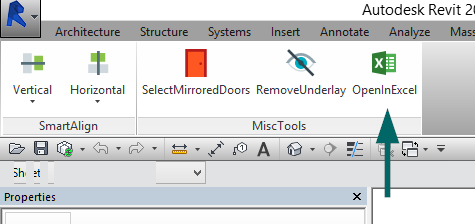Revit Tools for every single Job: Your Ultimate Design Companion
Wiki Article
Revit Accelerator: Excel Integration Approaches for Enhancing Performance and Collaboration
Are you looking to increase your productivity and collaboration while using Revit? Look no more! In this write-up, we will explore the benefits of integrating Excel into your Revit operations. Discover exactly how you can improve your procedures, make best use of partnership, and also learn advanced techniques for increasing productivity. Plus, we will share best techniques for flawlessly integrating Excel into your Revit tasks. Prepare yourself to supercharge your Revit experience with our Revit Accelerator: Excel Assimilation Methods!Benefits of Excel Integration in Revit
The benefits of Excel integration in Revit are numerous and can substantially boost performance and collaboration. By effortlessly attaching these 2 effective tools, you can enhance your workflow and save important time. With Excel combination, you can quickly import and export data between Revit and Excel, permitting you to utilize the strengths of both programs.
One more advantage of Excel assimilation is the capacity to create dynamic timetables and reports. By connecting your Revit version to an Excel spread sheet, any type of adjustments made in Revit will immediately update in the corresponding Excel documents. This makes it very easy to generate updated timetables, amount takeoffs, and various other project documents.
Excel assimilation in Revit likewise makes it possible for far better cooperation amongst staff member. With the capacity to import and export data, you can easily share information with colleagues who may not have access to Revit. This advertises efficient communication and enables better sychronisation and decision-making.
Enhancing Process With Revit and Excel
Simplifying operations with Revit and Excel can greatly enhance efficiency and collaboration. By incorporating the capabilities of Revit and Excel, you can seamlessly transfer information in between the 2 applications, getting rid of the requirement for manual data entry and reducing the threat of mistakes.
Utilizing Revit and Excel together allows you to leverage the strengths of each program - revit tool. You can export information from Revit into Excel, where you can perform complex estimations, develop graphes and charts, and analyze the information in a more reliable and well organized way. On the various other hand, you can import information from Excel right into Revit, enabling you to promptly upgrade your versions and paperwork based upon adjustments made in Excel
The integration of Revit and Excel likewise advertises collaboration amongst staff member. By sharing Excel documents, you can conveniently team up and communicate on design and construction-related data. This enhances coordination and guarantees that everyone is collaborating with the most up-to-date info.
Optimizing Partnership With Excel and Revit
To optimize collaboration with Excel and Revit, you can flawlessly upgrade and share design and construction-related information with your team. By integrating Excel with Revit, you can remove the demand for manual data entry and minimize the threat of mistakes. With simply a couple of clicks, you can import Excel spreadsheets right into your Revit version, permitting you to quickly accessibility and manipulate the information. This assimilation enables you to work together wikipedia reference extra efficiently with your group, as every person can deal with the exact same information in real-time.Among the essential advantages of utilizing Master conjunction with Revit is the capacity to update information in both programs all at once. Any kind of changes made in Excel will immediately be mirrored in Revit, and the other way around. This makes sure that every person is functioning with one of the most current details, staying clear of complication and conserving beneficial time.
In addition, Excel gives effective devices for analyzing and organizing data, which can significantly boost your collaboration efforts. You can create custom reports and graphes in Excel, aiding you to envision and connect vital task details successfully. This can be specifically beneficial look at here now when providing data to stakeholders or making notified decisions based on task metrics.
Advanced Methods for Increasing Productivity in Revit Making Use Of Excel
By using sophisticated techniques in Revit, you can dramatically enhance your performance by leveraging the power of Excel. With Revit's Excel integration attribute, you can link Excel spread sheets directly to your Revit design, allowing you to quickly take care of and update data.
In addition, you can utilize Excel macros to automate recurring tasks in Revit (revit tools). Macros permit you to tape a series of activities and play them back with a single click, saving you effort and time. For instance, you can create a macro to immediately produce room timetables or upgrade criterion worths wholesale.
Finest Practices for Excel Assimilation in Revit
Making Use Of Excel as a data management device in Revit enables for efficient management and upgrading of data. One of the best methods for Bonuses Excel integration in Revit is to develop a clear and organized information framework. By following these best techniques, you can properly use Excel as a data management device in Revit and improve your efficiency and collaboration.Final Thought
In conclusion, integrating Excel with Revit can considerably improve efficiency and cooperation in the layout procedure. By leveraging the power of Excel, Revit users can attain greater degrees of performance and cooperation in their tasks.With Excel assimilation, you can conveniently import and export information in between Revit and Excel, allowing you to leverage the staminas of both programs.
One of the key advantages of Excel assimilation is the capacity to make use of Excel solutions and functions within Revit. By linking your Revit model to an Excel spreadsheet, any changes made in Revit will immediately upgrade in the matching Excel data. On the various other hand, you can import data from Excel right into Revit, enabling you to promptly upgrade your models and paperwork based on modifications made in Excel.
With Revit's Excel combination feature, you can link Excel spread sheets straight to your Revit design, enabling you to easily take care of and upgrade information.
Report this wiki page